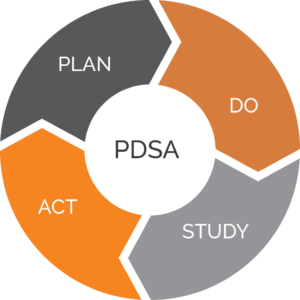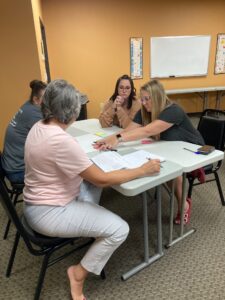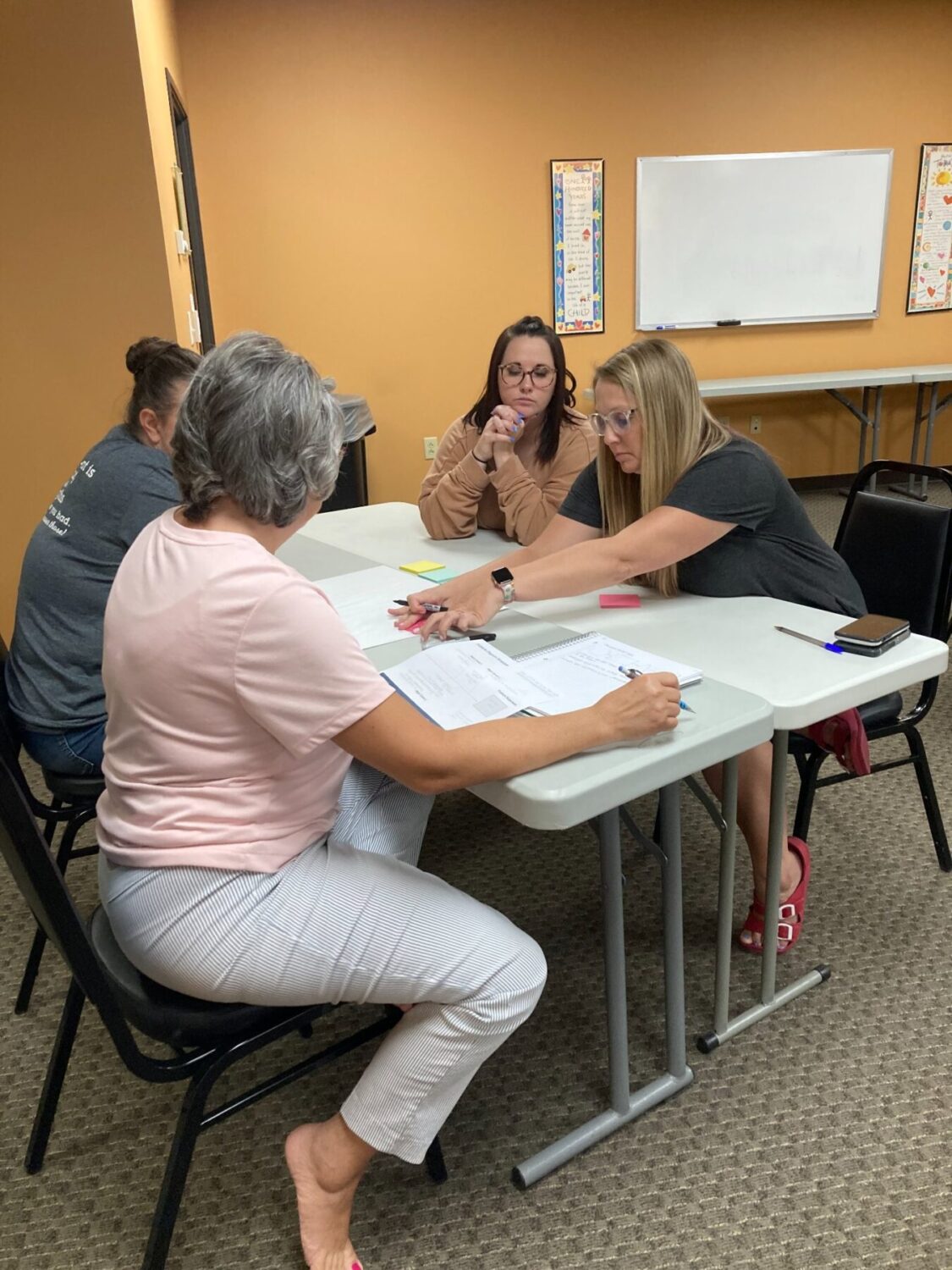You’ve completed your program evaluation (review those steps here) and returned your data results. Now what? After looking at your results, plan to take a moment to assess. Are the results what you expected? Are there things you don’t like about the numbers? Did it bring awareness to an issue? Identifying a problem or issue you want to address is the first step toward quality improvement.
Once you have decided what to focus on, it’s time to begin the Plan-Do-Study-Act (PDSA) process. The PDSA framework helps organizations implement a Continuous Quality Improvement process. We provide a complete overview of PDSA in this blog and this video.

Our first step in this process is to plan. In this step, we define our objectives, questions, and predictions. Then we create an action plan for data collection.
When planning, you need to develop your aim statement. Aim statements focus on the result we want to improve. These statements should be measurable and time-specific. Here is an example:
By December 2022, an after school tutoring program will promote improved literacy of participating children, as demonstrated by 75% of students increasing their reading level.
After you set your aim statement, we work with clients to complete a driver or fishbone diagram.
‘Plan’ Tools
Driver diagrams show the relationship between the project’s overall aim, drivers, and change ideas. Drivers are items that significantly impact the identified aim statement, while change ideas are the ideas you will test throughout the PDSA process. Download a template here.
Fishbone diagrams are interchangeable with the driver diagram. They aim to identify and examine a problem’s underlying or root causes. These are targets for your improvement that will likely lead to change and gaps in knowledge that require exploration. Download a template here.
Completing a driver or fishbone diagram is a great way to engage your team and get everyone’s voice at the table. If you aren’t hitting an outcome, brainstorm how to address that process with your team.

Case Study:
We are in the early stages of the PDSA process with The Villages. We have worked with the various county directors to develop their aim statements. They have identified specific deadlines and measurable outcomes to increase retention, recruitment, and referrals to the Healthy Families program. We are now helping them in the process of completing a driver or fishbone diagram. This process is entirely collaborative, as gathering all the voices around the table is the best way to gain insight into the inner workings of an organization and its programming.
Once you have identified the “change” you want, we must determine a strategic implementation process. A process map is a great tool to review your current practices and account for where changes are necessary. This tool helps to understand a function in your organization. When examining a process, ask yourself 1) Who is involved? 2) Do you need to update any procedures? 3) Is there a cost? and 4) Are there operational changes needed? When completing your process map, keep steps simple and work collaboratively.
Bringing multiple voices from an organization to the table can help you see the process from different angles and perspectives.
Now that you have your aim statement, planning diagram, and process map, it’s time to make a course of action for data collection. You can’t measure change without a clear data collection plan. Detail the data points necessary to answer your questions and measure your impact.
The main goal of the planning step is to reach a consensus on a “need” and “intervention” and to map out the program design and evaluation tools.
Before you jump to make a change, thoughtfully plan the steps to implement changes and collect data. After finishing this phase, you should have a definition of what you hope to accomplish, a plan for implementation, and a data collection procedure.
Is your organization ready to take on the PDSA framework? Do you need support? Stay tuned for more blogs and tools this month, and contact us today to chat with a consultant.

